23 May “How Far These Trees Will Travel”: Explore Upcoming Woodworking Classes with Kalia Kliban
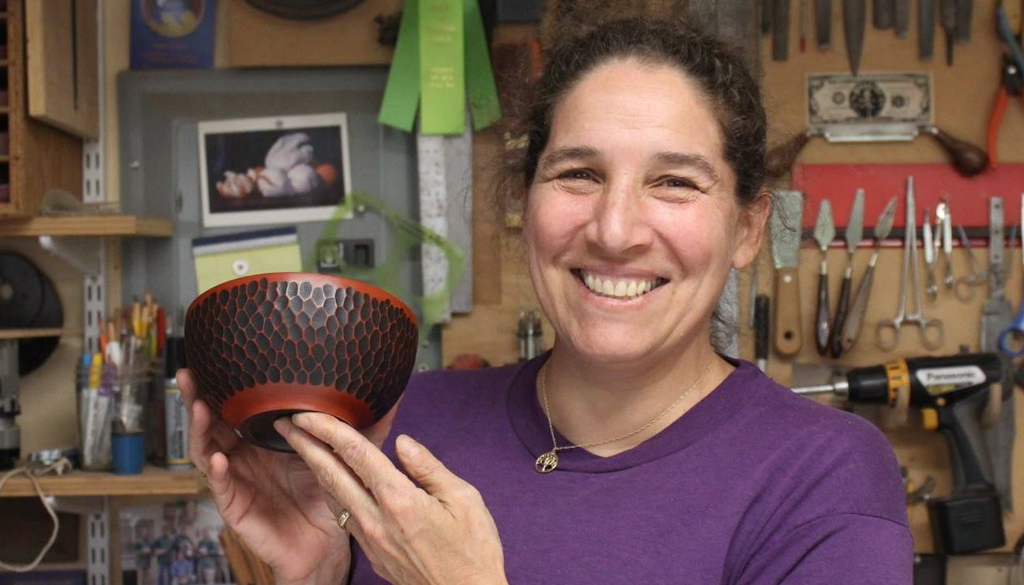
If you’ve come to our annual Winter Dance Week the past few years, Kalia Kliban is a familiar face–often calling English Country dances well into the evening. But did you know she’s also an accomplished woodturner and beloved instructor? We’re thrilled to have Kalia lead some woodworking classes this year and see our sprawling 270-acre campus in the beautiful summertime.
In Kalia’s upcoming woodturning class, “Handled Bowls,” from July 23-28, folks should bring their imagination and a willingness to play with forms. For those already comfortable at the lathe, her class will help bowl-turners create inventive handles and feet for their pieces, offering excellent sculptural possibilities.
We’re lucky to have her here a few weeks earlier for “Make and Dance with Your Own Wood Taps and Dance Board,” from July 9-15. In this all-level class, you’ll spend part of your week tapping into this rich, western North Carolina tradition, building your “dance vocabulary,” and dancing to live music. Then, you’ll spend the latter half of your week in the woodworking shop, constructing a dance board and personalized wooden taps to fit your leather-soled shoes.
Enjoy our interview below and learn more about Kalia’s extensive experience, artistic process, and classes happening soon! Are you interested in registering? A few spots are available in her upcoming music class and woodturning class – sign up online today!
JCCFS: Tell us more about your upcoming Woodworking class, “Handled Bowls,” happening in July. What will folks learn and what can they expect to leave this class with?
KK: Turning and carving with green wood is a great opportunity to keep our work fast and loose. The early projects will be for learning techniques and trying things out. They may not end up being bowls for the ages, but they’ll give students a way to work out ideas easily and quickly, before tackling more developed projects later in the week. Think of the green wood pieces as quick sketches and carving samplers. They can be goofy. They can be rough. They can be elegant and delicate. Doesn’t matter, but our goal is to make, make, make for at least the first few days, and be willing to play with shapes. Students are welcome to bring dry wood or chunky, fully-dry roughed-out bowls from home for working later in the class to create more refined pieces, or they can stick with the green wood and try out a whole lot of different forms. We’ll spend time on surface embellishments such as sanding (or lack thereof), carved textures, paint and combinations of the above, and I’ll bring milk paints and acrylics for the students to try out. We’ll also talk about ways to use the volatile nature of green wood to our advantage.
In one’s own shop it’s easy to get into a rut, but a class like this offers the chance to try brand-new ideas, tools and techniques that can bring fresh energy to our work when we’re home again. My hope is that students will go home with a stack of knobbly, footy, handled bowls and a brain fizzing with new ideas.
JCCFS: That’s exciting! Tell us more about the specific technique or process for making a handled bowl.
KK: A well-made wooden bowl is a joy to hold and use, and can be pleasing to both the eyes and the hands. The addition of integral feet or handles, though, can take the humble bowl to a whole new sculptural level. A bowl can have attitude, humor, and personality, as well as increased functionality, when you give it those “sticky-out bits.”
Building from the students’ existing ability to turn a basic bowl, and starting with a few simpler projects, the class will explore the wide world of protrusions–a simple ring-style foot that can be cut into smaller nubs, a wide flange that can be shaped into handles, perhaps even multi-axis mounting to create turned handles. We’ll spend time talking about designing, shaping and modifying the protrusions that the feet and handles are made from, since the lathe is the first stage in the sculptural process. We’ll also look at the ways a given profile can be altered to create radically different effects. Safe cutting technique, both on and off the lathe and strongly emphasizing the use of the 40/40-grind bowl gouge, will be a constant part of the instruction.
We’ll have a variety of carving tools to mess around with, both powered and hand tools, and students are strongly encouraged to bring their own carving and shaping (and sharpening) tools from home. For many years I made all my handled bowls using the lathe and a simple carving knife. It doesn’t take a lot of fancy tools to add spice to a bowl, but it’s fun to try out new things.
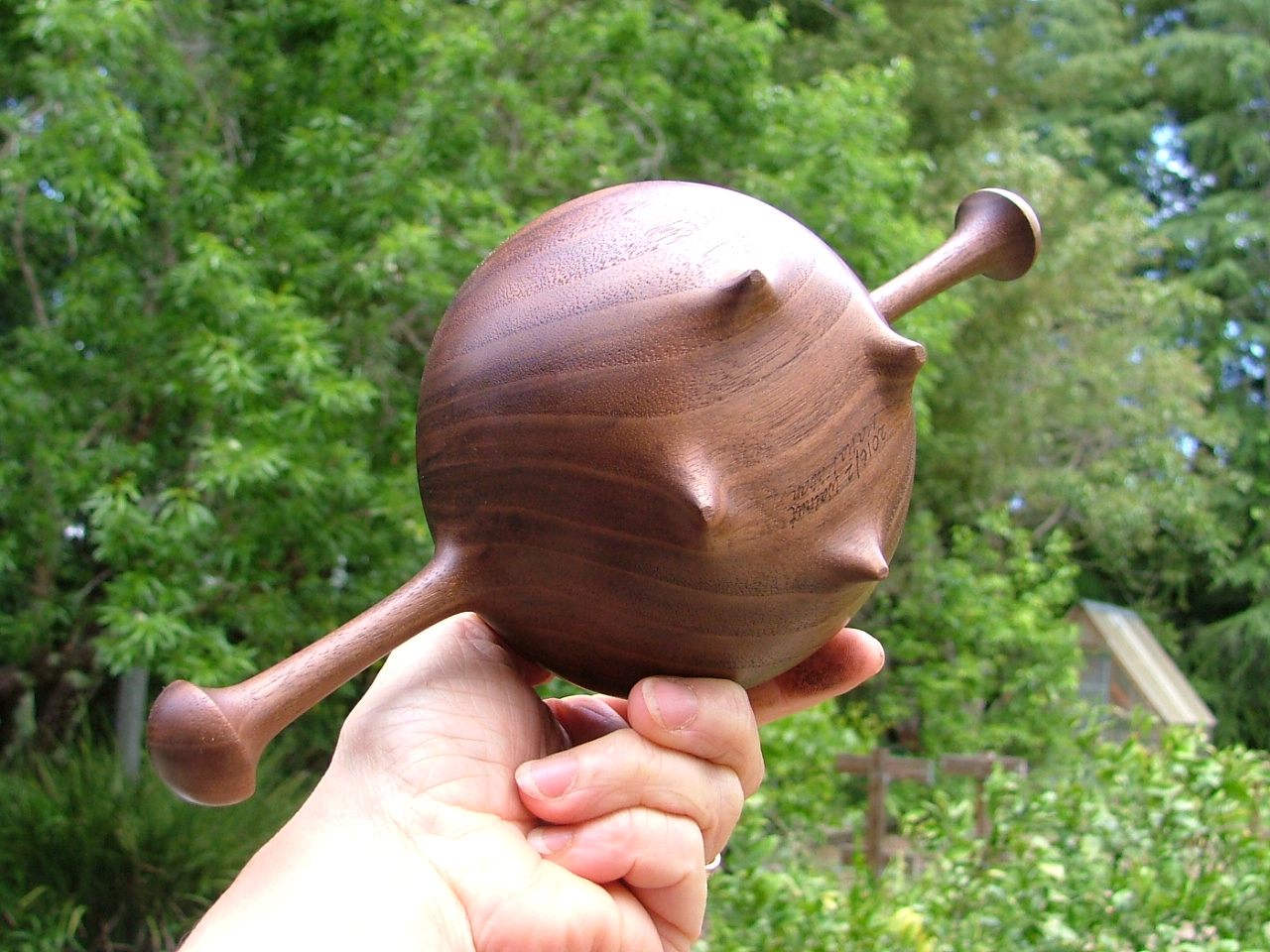
One of Kalia’s inventive bowls
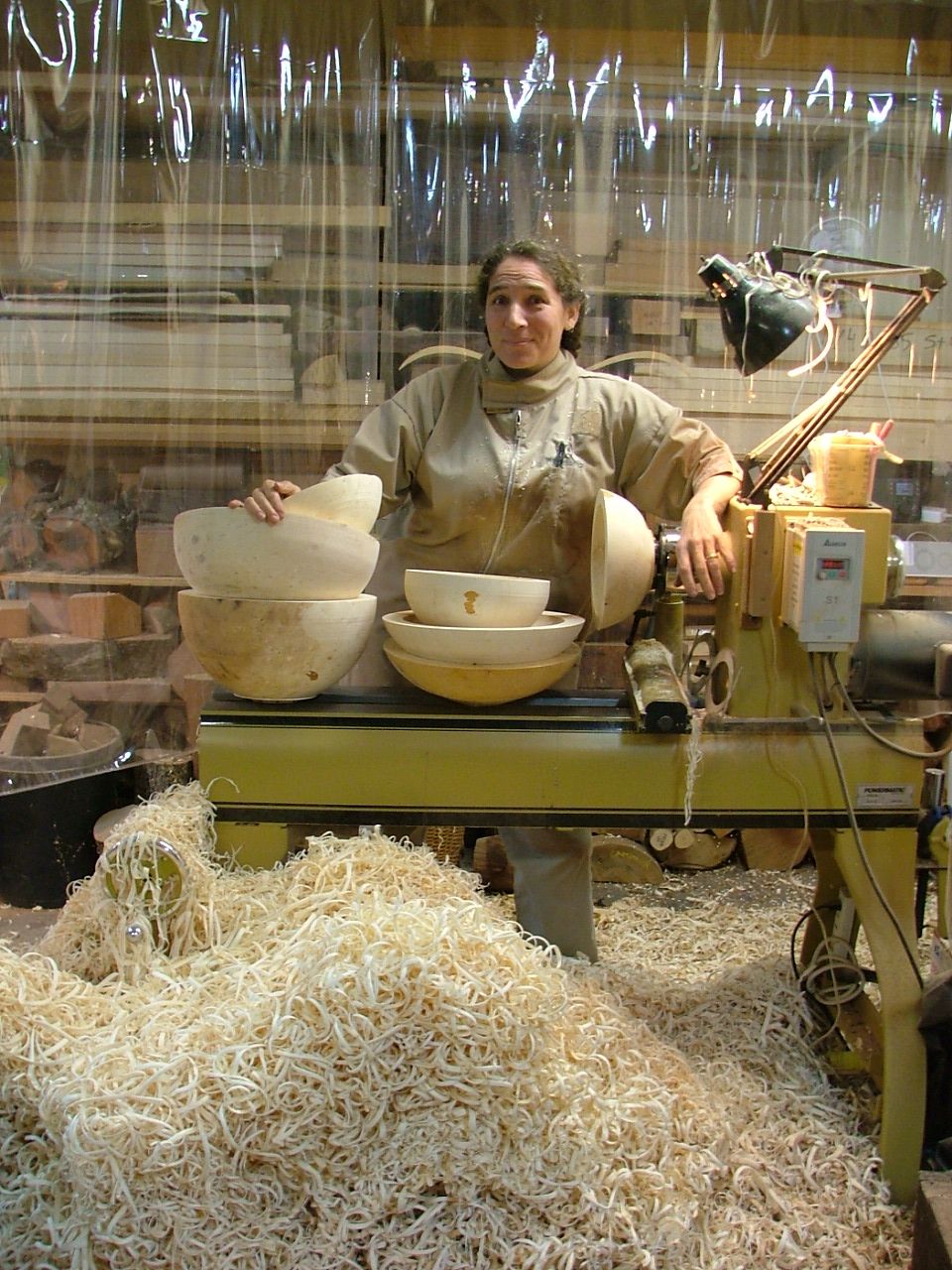
Kalia after roughing out some bowls. Look at all those shavings!
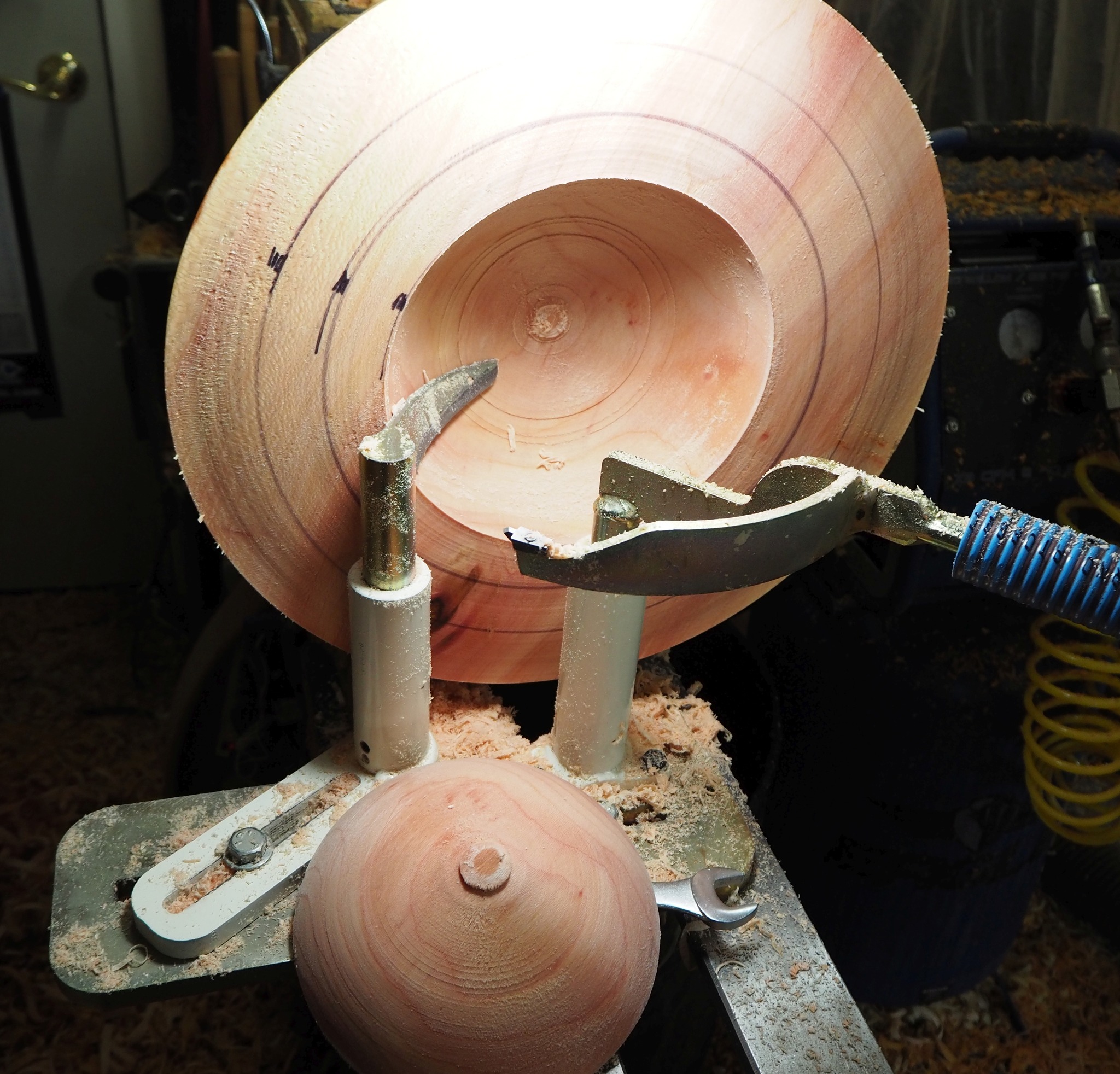
A peek into the process: roughing out bowls from a large sycamore log
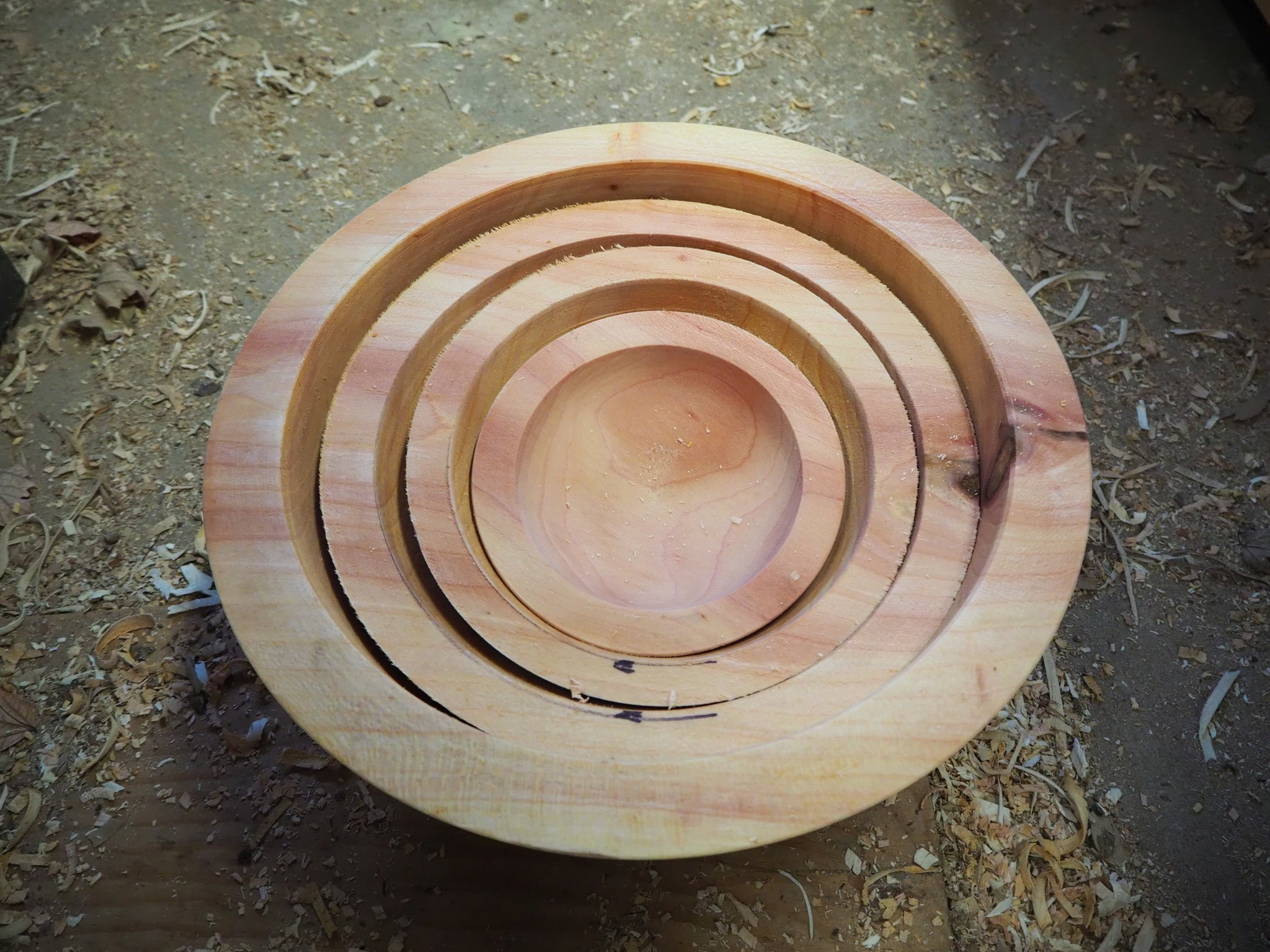
Kalia has plenty to turn! This is from one chainsaw-cut blank.
JCCFS: Earlier in the month, from July 9-15, you’re also co-teaching the class, “Make and Dance with Your Own Wood Taps and Dance Board.” How did this class come about, and what can students expect from it?
KK: In the late 1980s I was part of an old-time clogging group called The Cornmashers, based in San Francisco. Our rehearsal space at SF City College didn’t allow metal taps, which was what most of us were dancing in at the time, so both as a response to that and also in an effort to get a cleaner and warmer sound more appropriate to the style we danced, I started experimenting with different ways to make wooden taps. I had no examples to work from, so had to try a few different designs before settling on the one I currently use. Once I made my own taps, I started making taps for other members of the group, refining the technique with each pair of shoes. A few years later, I taught the technique to some newer members of the group, then yet later to some of my clogging students. One of those students taught another friend of hers, and that friend is now the Music & Dance Programs Coordinator at the Folk School (hi Charmaine!). It’s a small world.
As the years have gone on, I’ve continued making taps for American, Irish and Scottish hard-shoe dancers and cloggers, and have been on the lookout for a place where I could teach this process to other folks. The Folk School has the perfect mix of traditional music, dance and craft facilities to make this class possible, and I’m really excited to be able to pass this skill along to a new group of makers. It’ll be my first chance to integrate the 2 sides of my life, dancing and woodworking, into a single event.
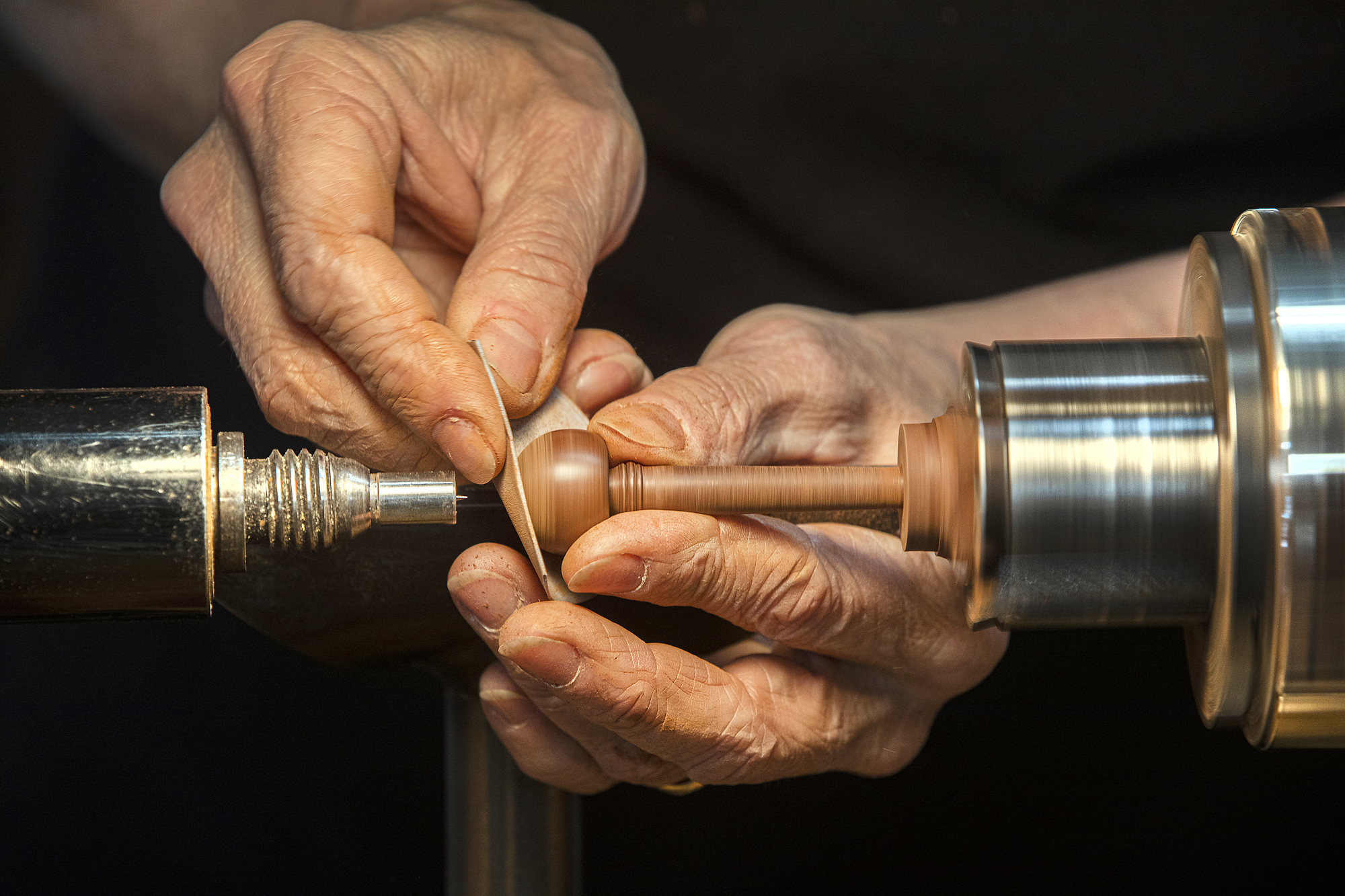
Turning at the lathe
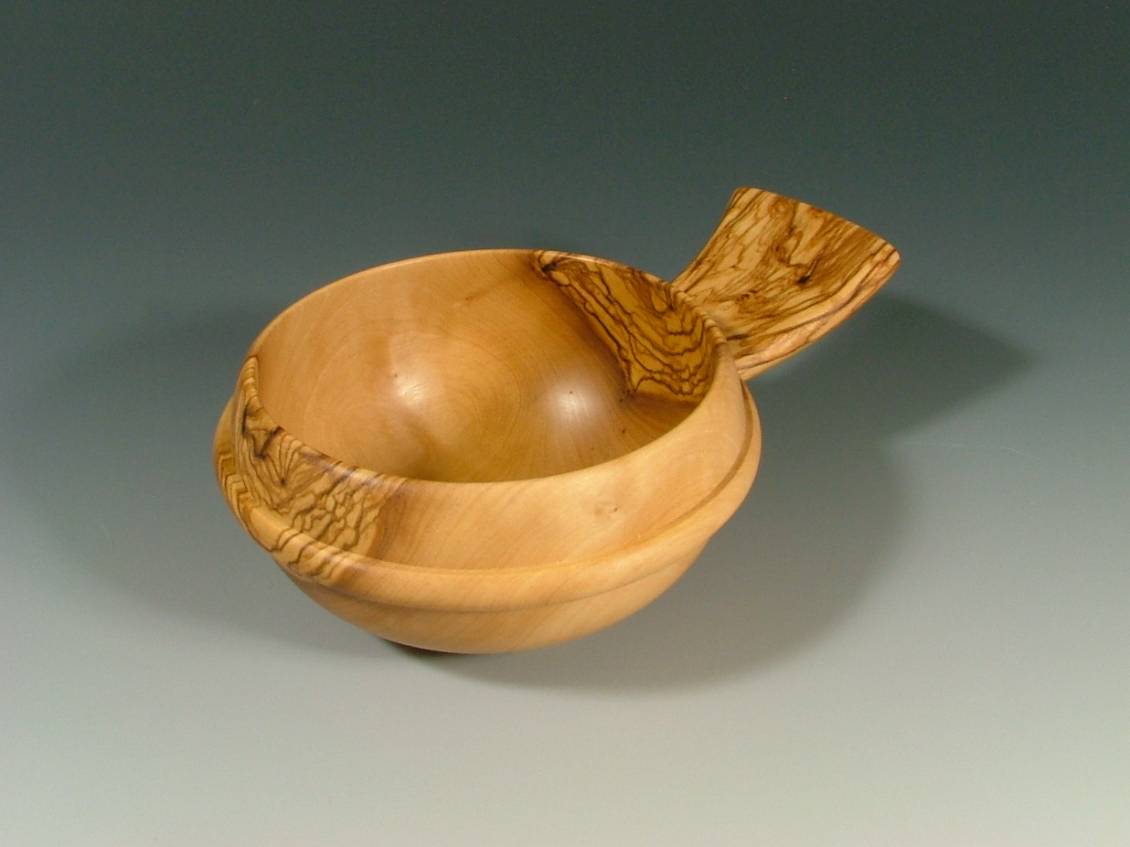
Kalia’s olive cup
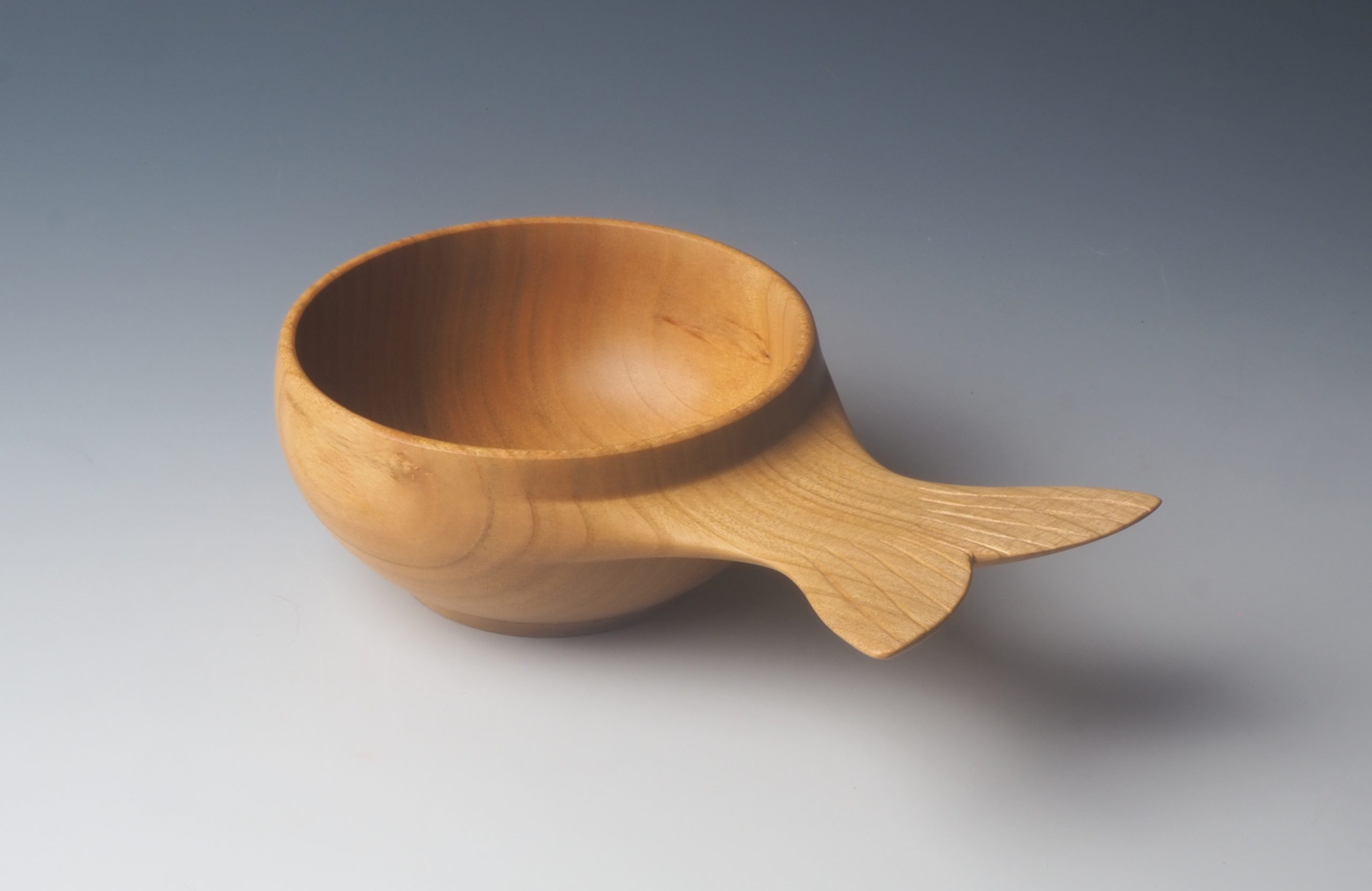
Kalia’s punny creation, the fish bowl, made out of ornamental (non-fruiting) cherry salvaged from a friend’s garden when the tree died.
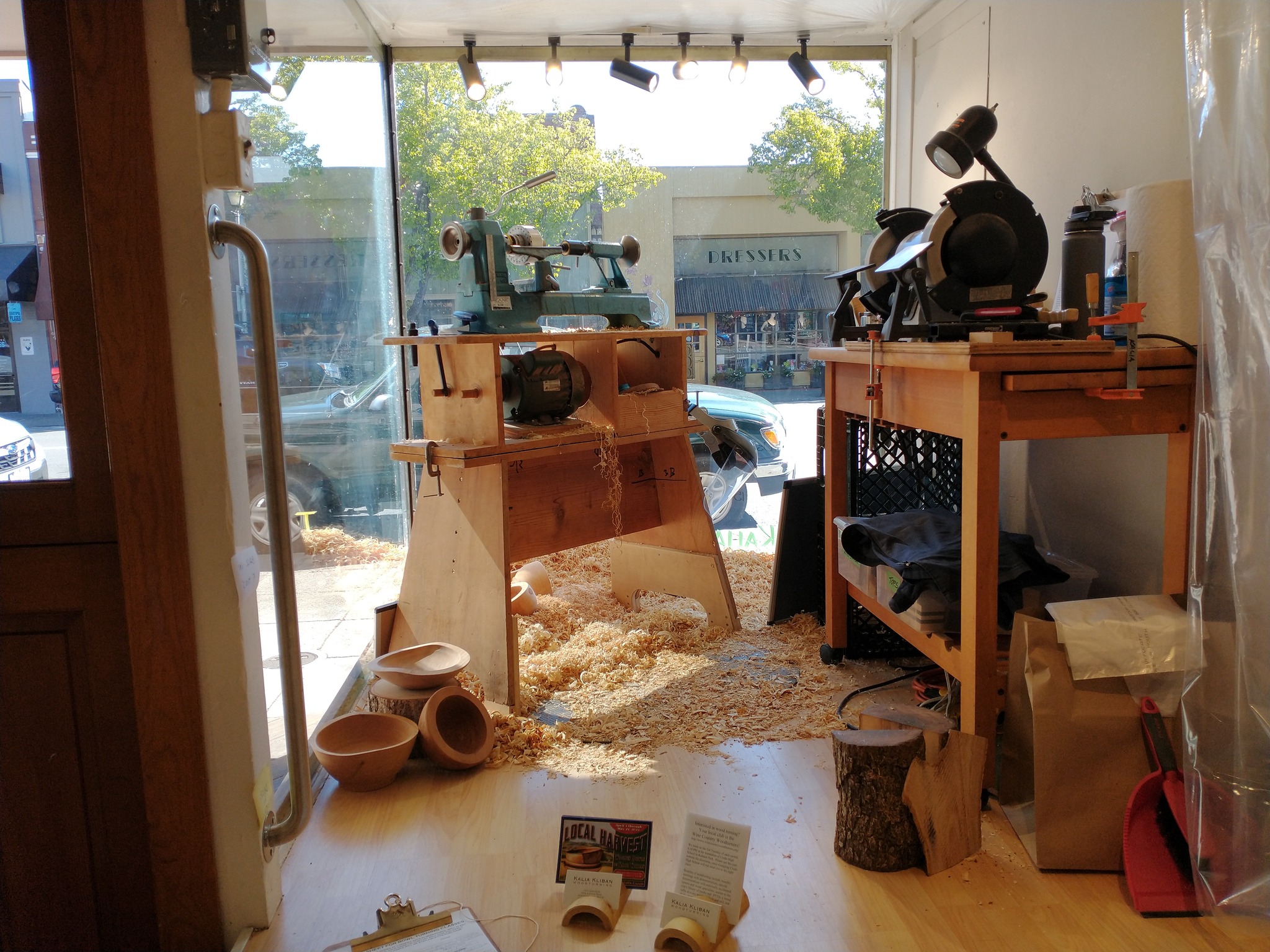
Kalia’s demonstration area during her gallery show, “Local Harvest,” at Sebastopol Gallery in California.
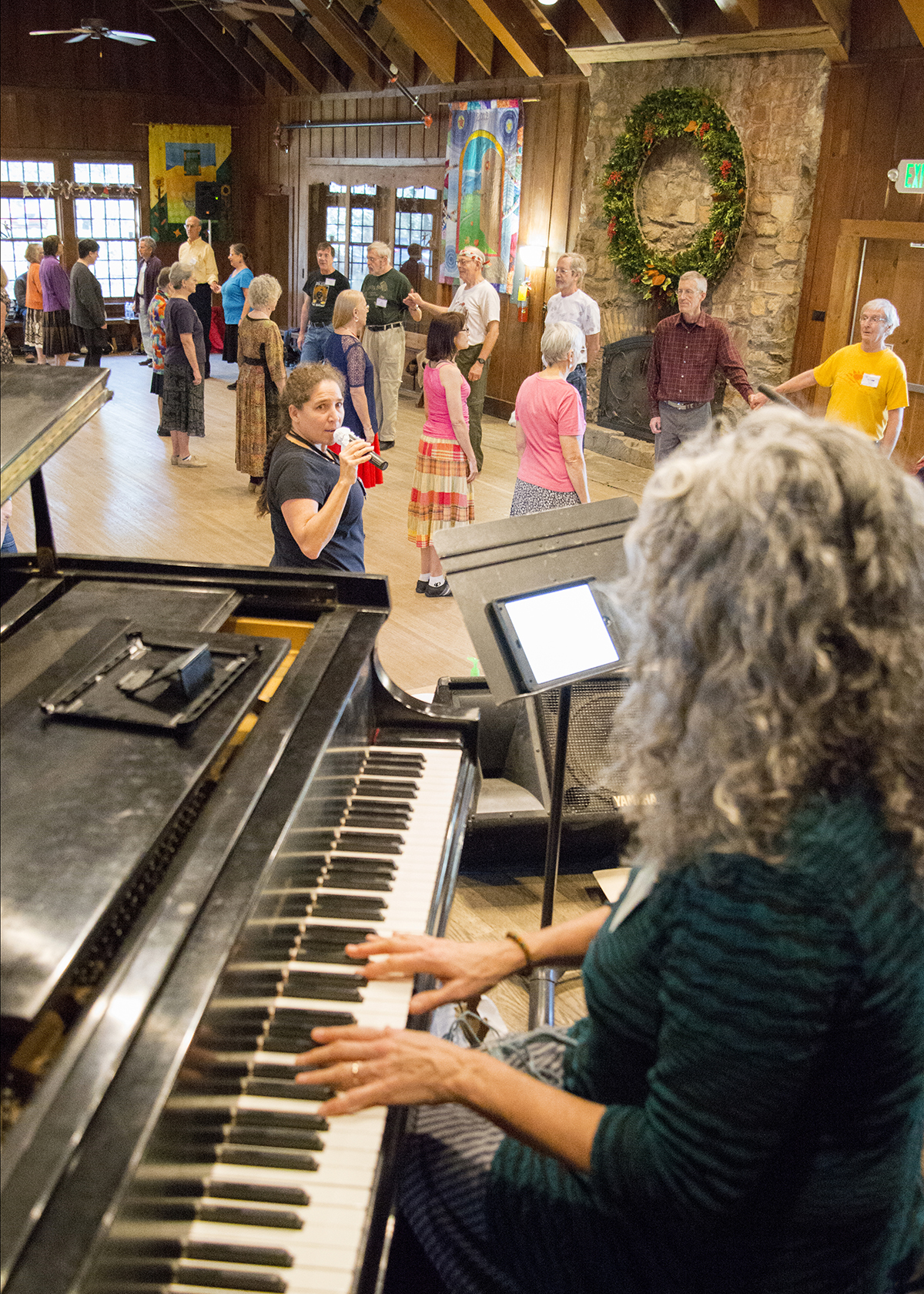
Kalia calling at Winter Dance Week in 2016
JCCFS: Tell us a little more about yourself for those who are unfamiliar. How did you get started?
KK: I’ve been a professional woodworker since the mid-90s, primarily as a furniture and cabinet maker but also spending some time working in guitar repair and construction. My other line of work is as a traveling dance caller, and when that work started heating up to the point where it became less compatible with my 9-5 job in the cabinet shop, I switched over to woodturning (which had been until then just a passionate hobby) and joined a local co-operative gallery (Sebastopol Gallery) in 2011. Since then my woodworking focus has been almost exclusively creating one-of-a-kind wooden bowls, platters and utensils from locally-harvested woods. My work has been featured many times in American Woodturner magazine, and I was profiled there in the December 2017 issue and featured in an article called “Then and Now” in the August 2022 issue.
One of the most important factors in my development as a turner has been the community and camaraderie of my local woodturning club, the Wine Country Woodturners. The shop talk, critiques, wood sharing, and mutual support over the years have been an invaluable source of inspiration and encouragement, so as a way to give back to the club I started demonstrating the things I had learned. My experience as a dance leader has helped me to become an extremely effective teacher and demonstrator. In addition to demos for our club and others, I’ve had a long succession of private students and for the last year have been teaching a now-sold-out series of bowl-turning classes at our local maker space.
JCCFS: What do you enjoy most about teaching?
KK: I love the moment when the light bulb goes on for a student, when they suddenly feel that perfect cut and see the stream of glossy shavings flying past their shoulder. I truly love what I do for a living, transforming pieces of rough wood to create something entirely new. I love making objects that are both completely functional and also beautiful to see and pleasing to touch. Being able to share that joy is a huge part of why I teach and demonstrate.
After making a gazillion bowls of my own it can be hard to remember that rush of pride I had when I finished my first one, but I get to see that in my students when they take that first bowl off the lathe. I know that they won’t all become full-time or even occasional turners–for many of them this is just a thing to try out once. But whether they never do it again or do it for the rest of their lives, they’ll remember how it felt to create that bowl. They’ll remember that it was their hands and their skill that brought it into being, and that every little curve is one that they put there.
There is tremendous power in knowing how to make things–doesn’t matter whether it’s a bowl, a loaf of bread, a garden, a shirt… So many people go through life only using things that were made by others. More people should have the experience of holding something in their hands and being able to say “Look, I made this!” That’s why I teach.
JCCFS: What attracted you to the John C. Campbell Folk School?
KK: I’ve been connected to the Folk School since my first time as an English dance caller at Winter Dance Week in 2016. I fell in love with the Keith House dance hall and it remains one of my all-time favorite places to call. That first year I left a whole lot of nose prints on the windows of the wood shop, since during Winter Dance Week none of the craft studios are open so I had to content myself with peeking in from outside. I’m absolutely thrilled that I now have the opportunity to teach not only in the woodshop but also in that knockout gorgeous turning studio, and to experience the campus when all the craft studios are active and bustling. I’ve never seen the place except at the dead of winter, so July will be a very different experience.
JCCFS: Where do you draw inspiration from in your work?
KK: There are quite a few bowl makers whose work inspires me, high on the list being Robin Wood (pole lathe turner from England whose porringers got me interested in making bowls with handles), David Fisher (his carved bowls are among the most beautiful bowls I’ve ever seen), Jim Sannerud (his loose, skillful and whimsical carving work inspire me to relax and play), Merryll Saylan (her fearless use of color and texture make her pieces really sing) and Bill Luce (clean, pure forms that remind me that sometimes a simple form can be the hardest, and most worthwhile, to create). All my teachers have provided their own spin on what’s important, what they value in a piece, and years in the shop have helped me to find my own voice and my own evolving aesthetic.
The wood itself is a strong collaborator in my work. Though I may have a clear idea of what I plan to make, the wood always has a say in it, and sometimes the deciding vote. Every piece of wood is different–the smell, the weight, the texture, the working properties. It’s a glorious, eternally variable medium and a lifetime isn’t enough to learn how to understand it.
I see my bowls as a way of connecting people with the trees that they’re made from. Through my hands a tree derives a second phase of existence as part of someone’s daily life. The surfaces that my eyes and hands have touched and shaped, the facets left by my knife, or the smooth sanded surfaces, will in turn be touched and held by who knows how many sets of hands and generations of owners. I like to think of that thread of connection, that perhaps in a couple hundred years someone will hold an old wooden bowl and tell their grandkids to take good care of it “because it was my great-grandma’s favorite bowl.” I like to wonder how far those trees will travel in their new form.
JCCFS: What’s something you’ve made recently that you’re proud of?
KK: For a recent show, I made a footed bowl with a design that’s completely new for me. It has a sinuous, wavy, continuous foot, and I love the way it looks. The finished design was a detour from my original plan, much better than what I had intended, and was the result of noticing the way the light played across part of the carving as I was beginning to shape the feet. That moment was the inspiration for accenting the shadow line I had seen, and the rest of the form followed that concept. The bowl (called Quadriloba, since it’s made from ginkgo wood and has 4 feet) is finished with a multi-layer milk paint surface that echoes Japanese urushi lacquer.
JCCFS: Where can folks find you if they want to stay up to date on your work?
KK: My Facebook page is at kkbowls, and that’s where I currently post photos of new work, show updates and shop news.
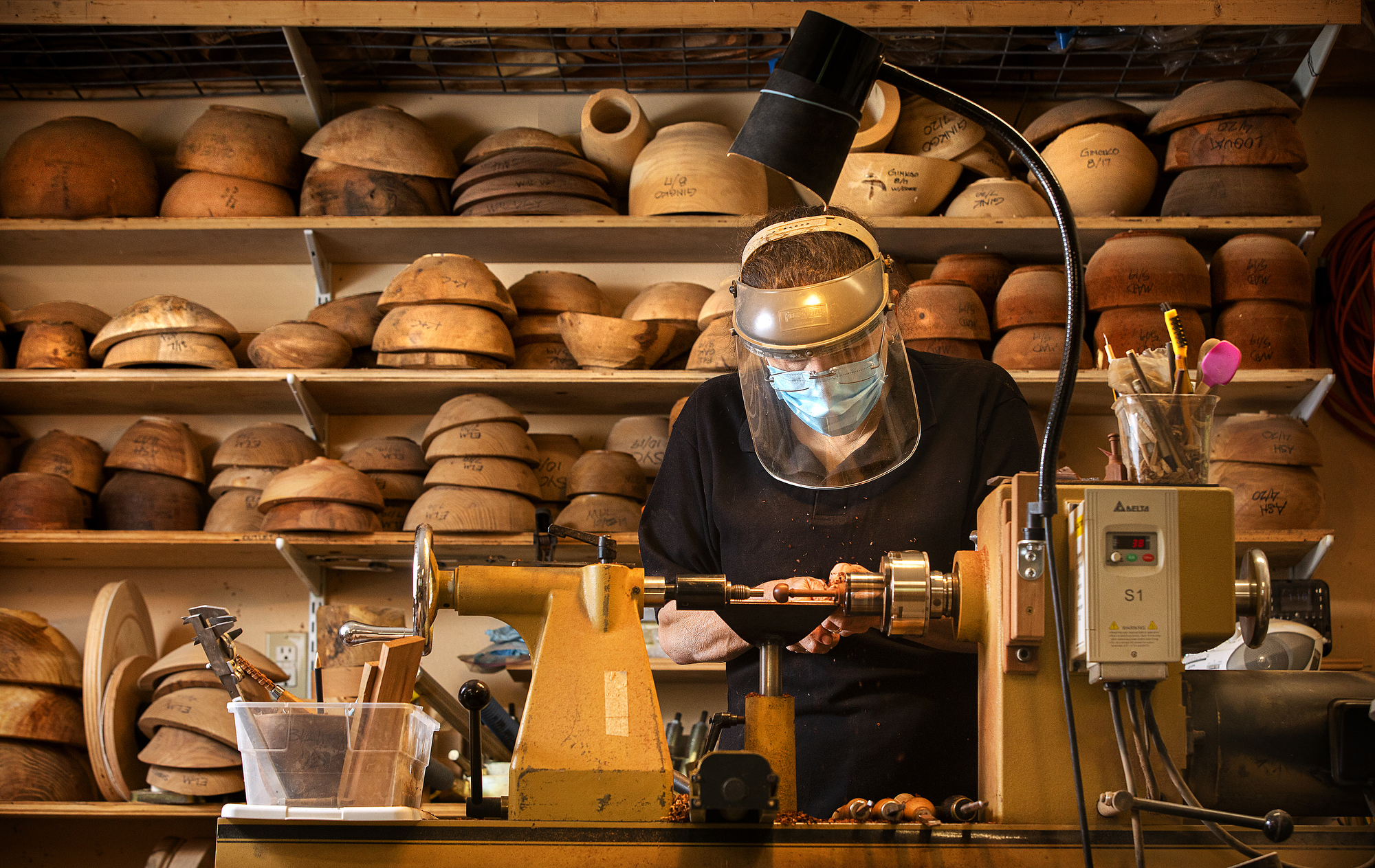
Kalia at the lathe
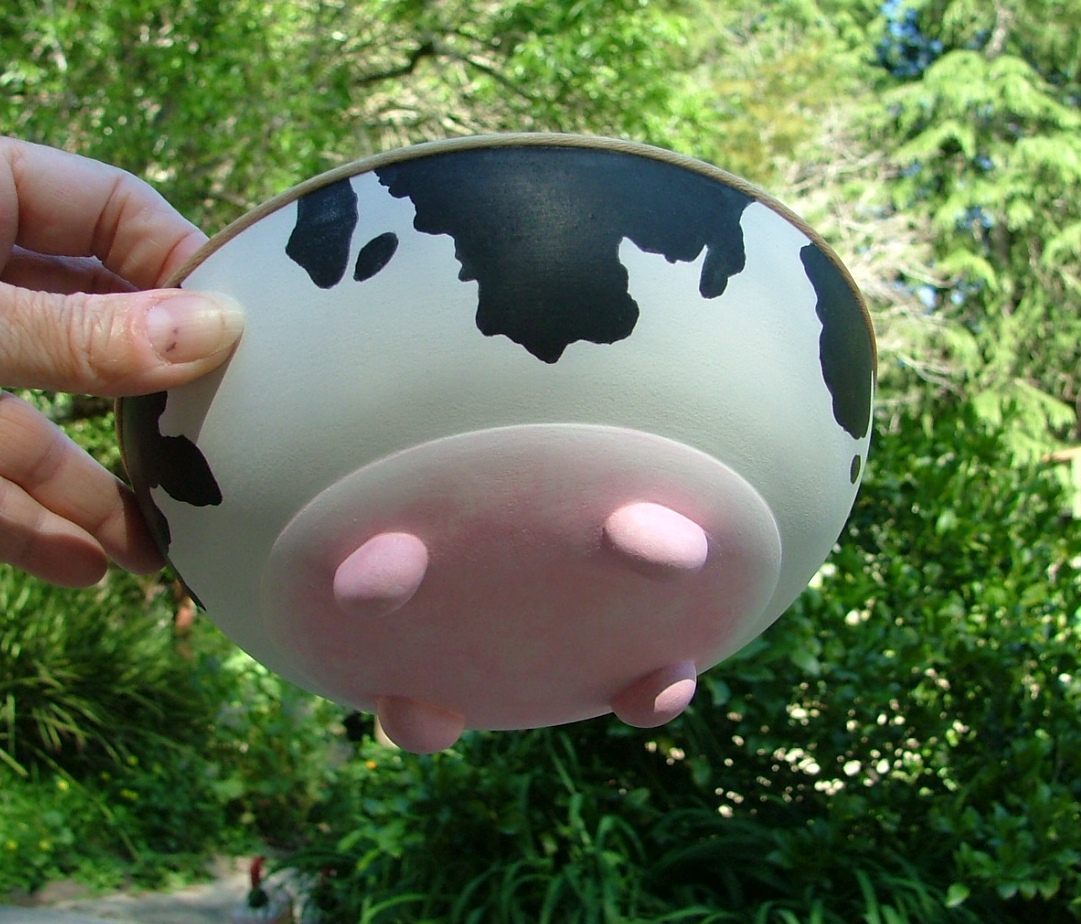
A cute cow-themed bowl!
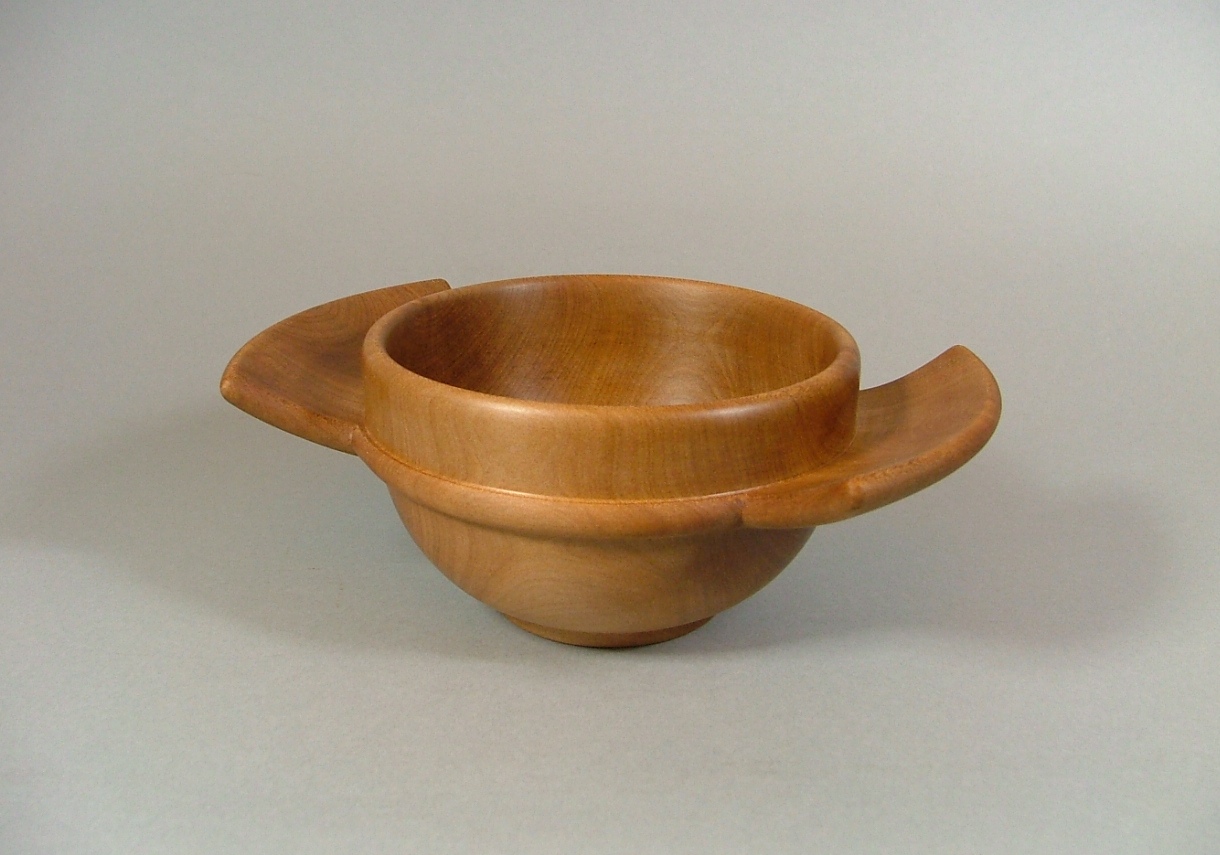
Two handles are better than one
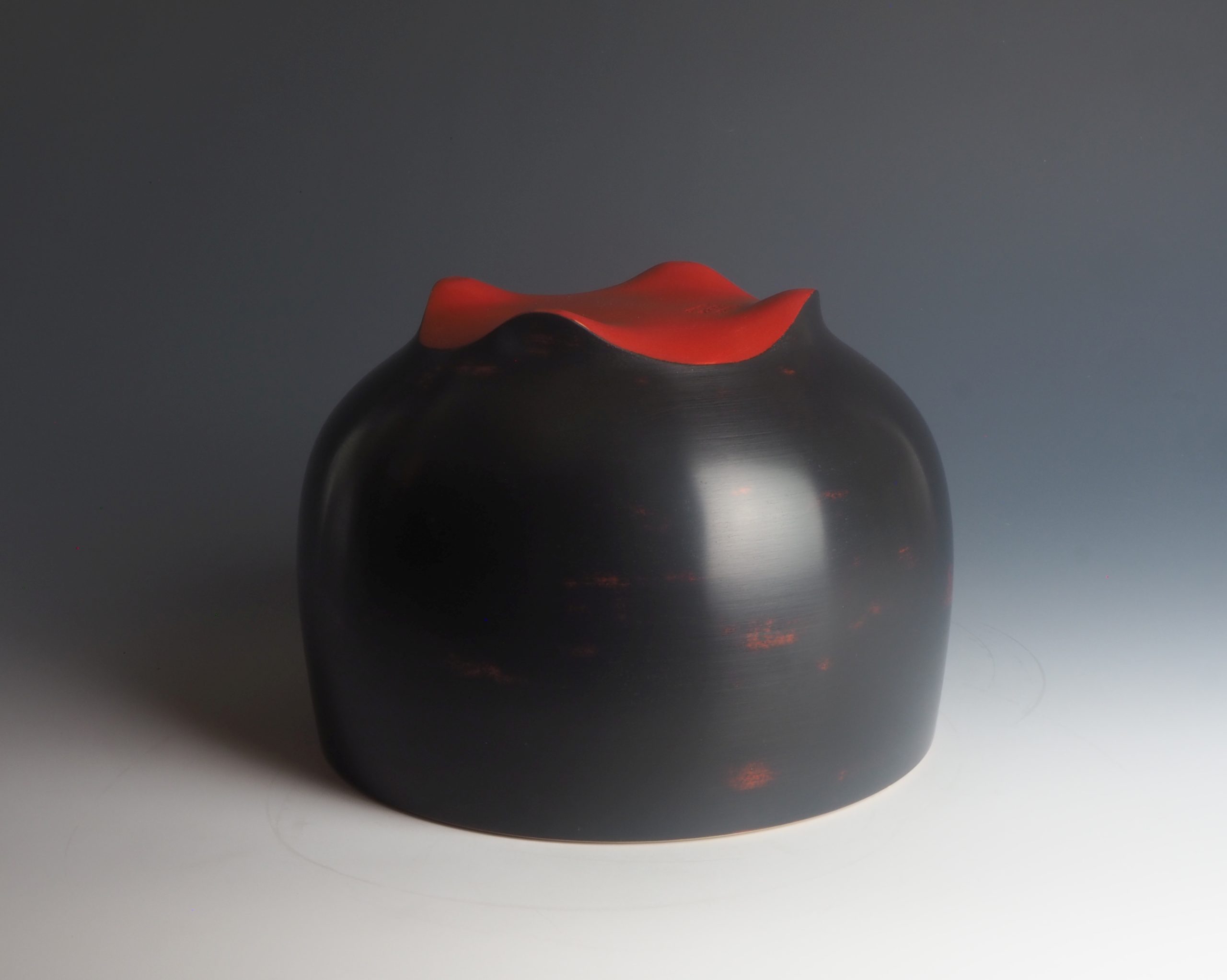
Kalia’s Quadriloba bowl, made for a recent show.
Upcoming Classes with Kalia
Make and Dance with Your Own Wood Taps and Dance Board
July 9-15, 2023
Immerse yourself in the music, motion, and materials of percussive dance. Spend part of your week tapping into this rich, western North Carolina tradition, building your “dance vocabulary” and dancing to live music. Spend the rest of your time in the woodworking shop, constructing a dance board and personalized wooden taps to fit your own leather-soled shoes. Head home ready to bring hand (and foot!) -made rhythm to your music, your dancing, and your life.
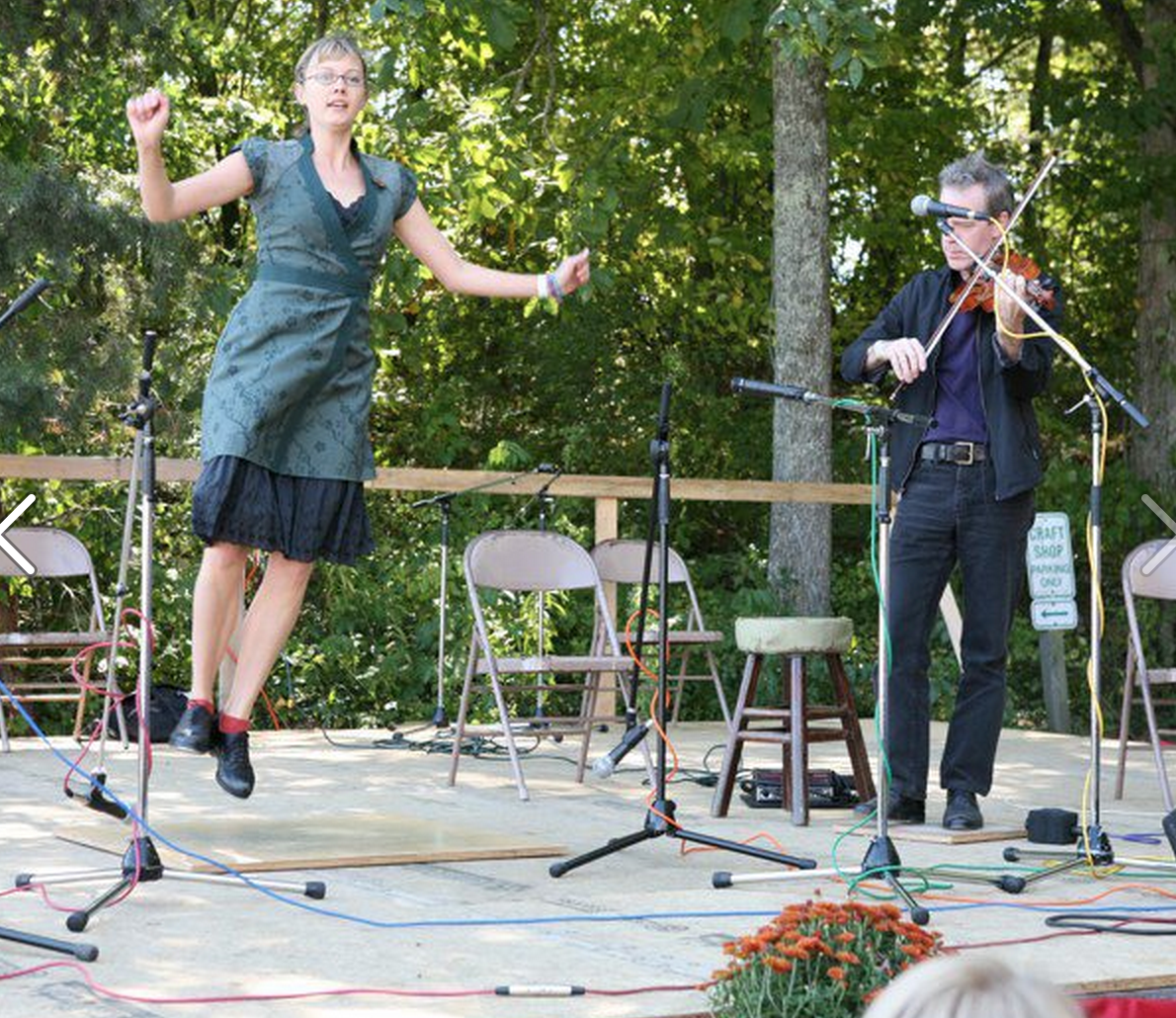
Handled Bowls
July 23-28, 2023
Get a grip! Bowls with integral handles are an ancient form that offers wonderful sculptural possibilities. The same techniques used to create handles can also produce feet. Once the bowl is off the lathe, you can alter the turned forms using a chisel, knife, or power carver. Bring your imagination and a willingness to play with forms. For intermediate turners who are able to turn a bowl with gouges (not scrapers) without supervision.

About Kalia Kliban
Kalia Kliban has been a professional woodworker since the mid-1990s. She started as a cabinet and furniture maker, with a brief detour into guitar repair and construction, then settled into woodturning in 2010. She specializes in finely-turned functional bowls, plates, boxes and utensils, with occasional forays into whimsical or sculptural pieces. Her work has been featured many times in the journal American Woodturner and in shows and exhibits across the country. When she’s not behind the lathe or wielding a chainsaw, she can be found behind the microphone calling English country dances and contra dances at events throughout the US and beyond.
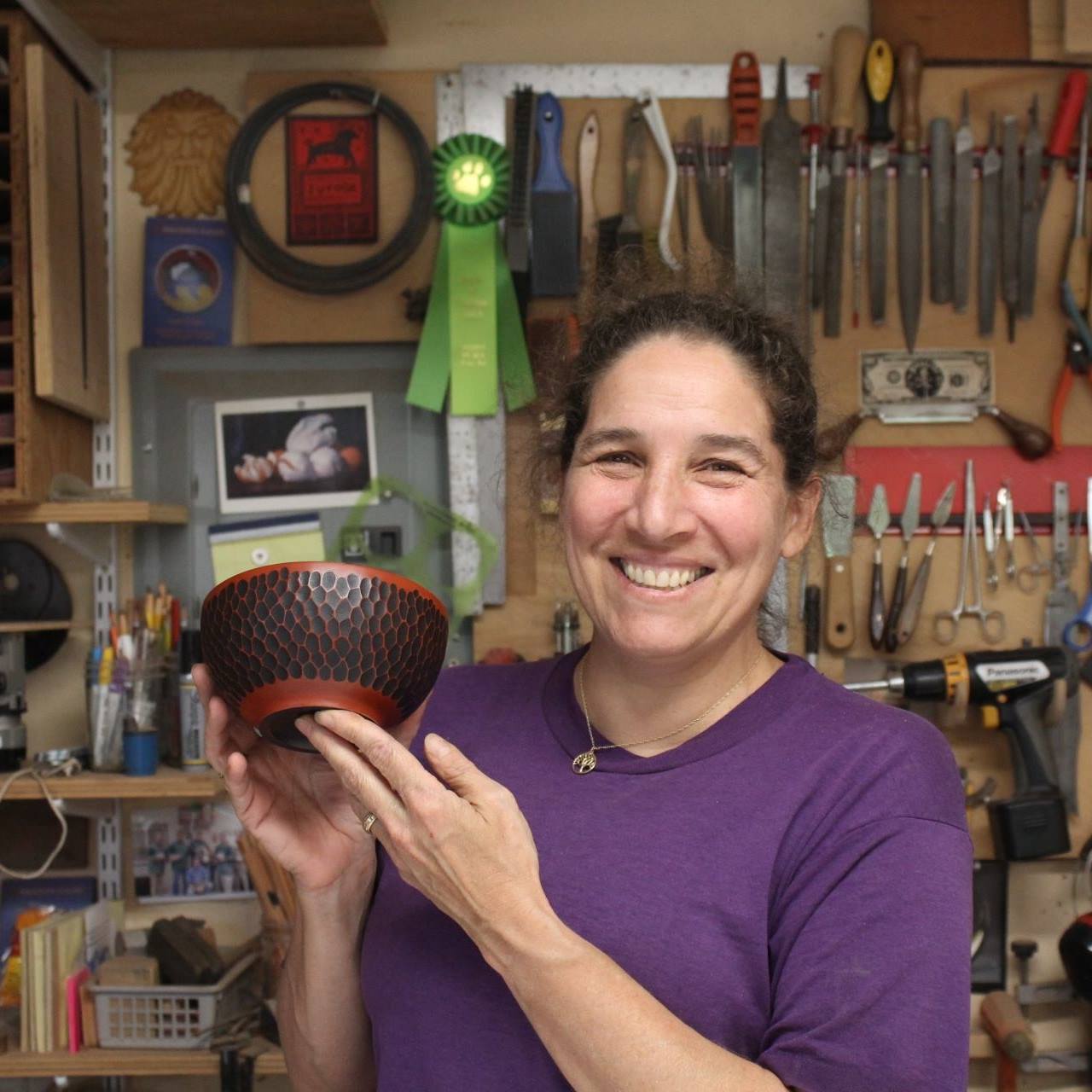



No Comments